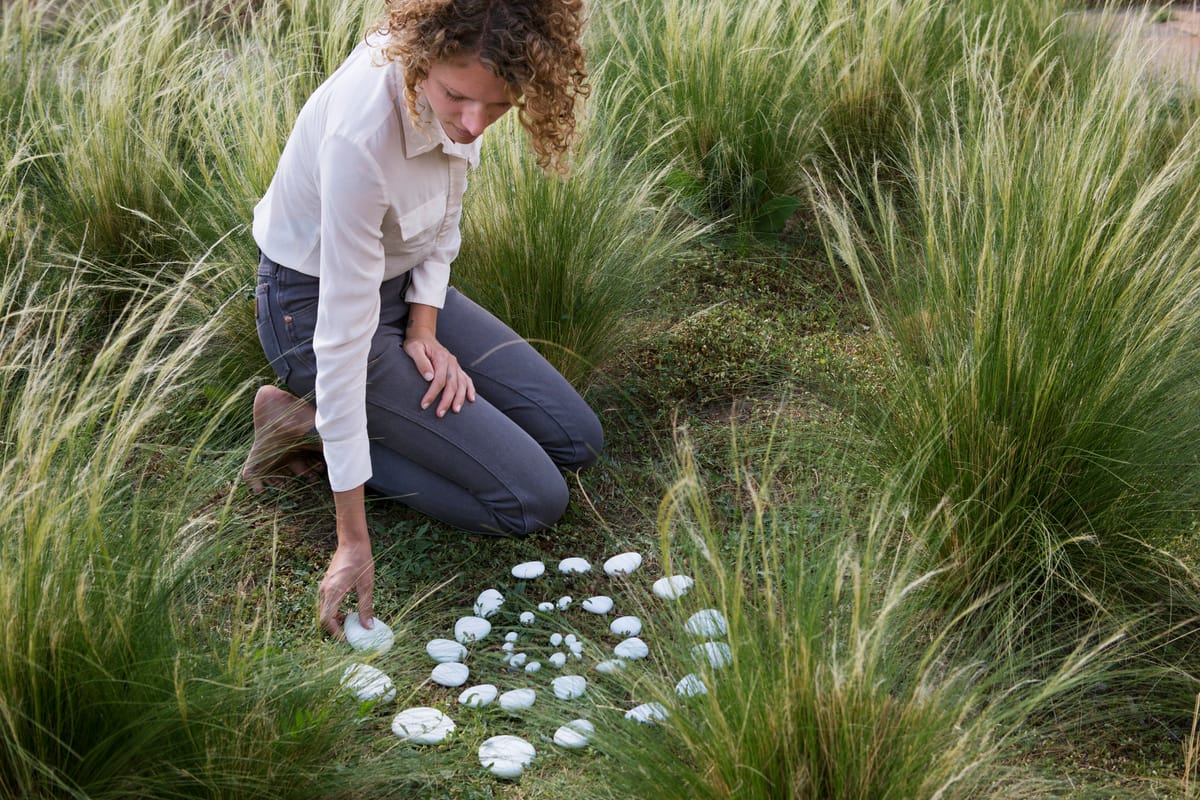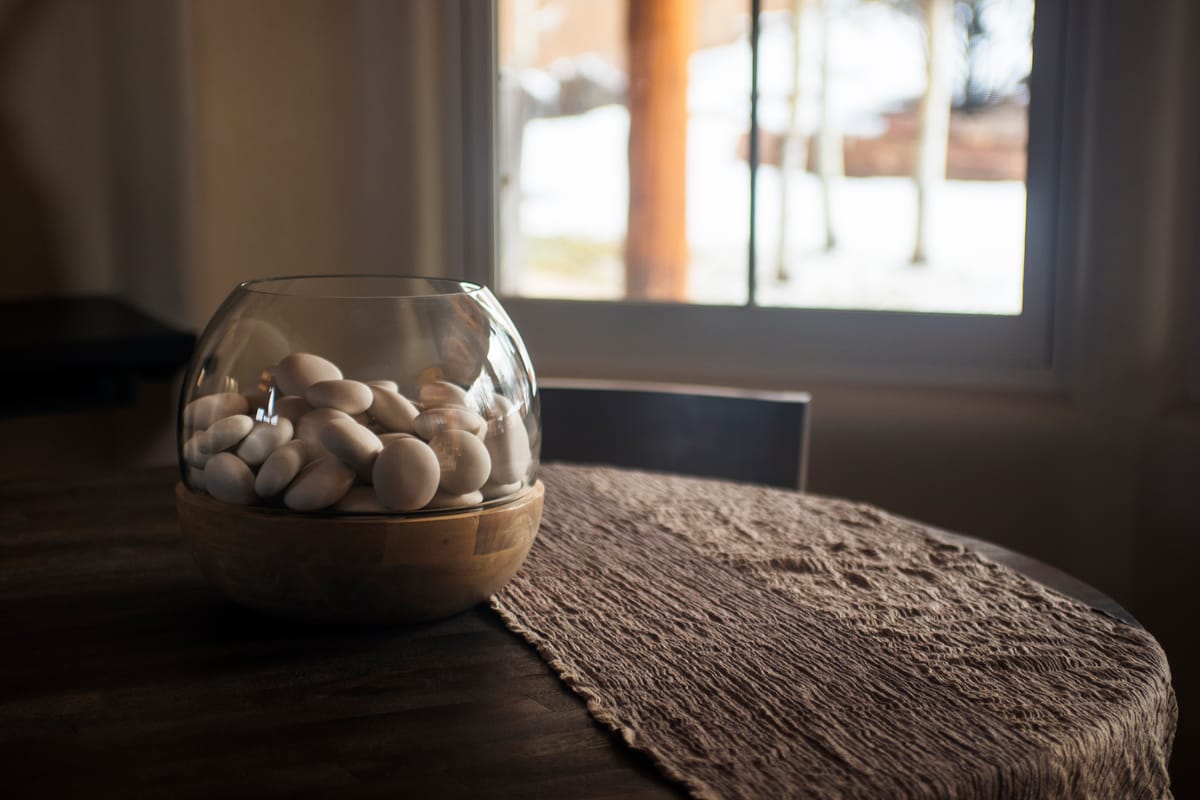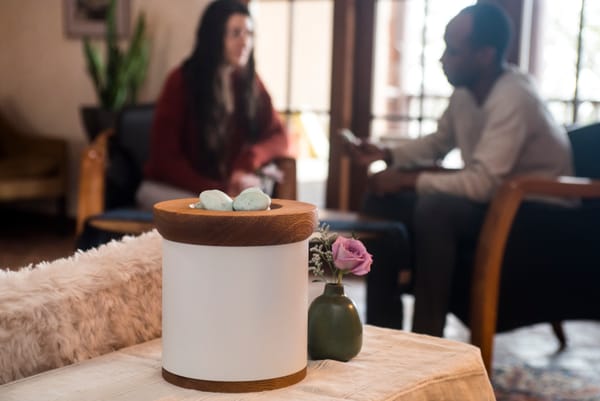What Are Solidified Remains? Complete Guide to Cremation Stones
Solidified remains transform cremated ashes into smooth, stone-like memorials you can hold, share, and keep close. Learn how this gentle alternative offers lasting comfort and a meaningful way to honor your loved one.

When you're navigating memorial decisions for someone you love, you may find yourself exploring options you never knew existed. If you've come across the term "solidified remains" and wondered what it means, you're not alone. Many families discover this innovative memorial option during their research and find it offers something uniquely comforting, a way to transform cremated ashes into beautiful, tangible stones that can be held, shared, and cherished for generations.
Understanding your options during this time isn't about rushing into decisions. It's about learning what's possible, so when you're ready, you can choose what feels right for your family and honors your loved one in the most meaningful way.
Reflections on love, loss, and the ways we carry them.
Solidified remains offer families a gentle balance between permanence and peace of mind, transforming something often seen as difficult like traditional ashes, into something tactile, beautiful, and deeply comforting. Unlike urns that may end up hidden away, these beautiful, stone-like pieces invite touch and presence, allowing loved ones to remain part of everyday life rather than confined to storage. Families can hold them, share them, or place them in gardens, creating personal rituals that grow with time.
The natural variations in size and color reflect the uniqueness of each life, making every collection a quiet reminder that memory is both intimate and enduring. Solidified remains also ease environmental concerns, integrating safely into the earth without the ecological risks that come with scattering ashes. For families spread across distances, the stones can be divided, ensuring that connection and comfort reach everyone who needs it.
More than an alternative, they are a way of transforming grief into something that can be carried, held, and cherished. In choosing solidified remains, families often discover not just a memorial, but a new way of staying close.
Cathy Sanchez Babao
Parting Stone Grief Coach
Understanding Solidified Remains: A Clear Definition
Solidified remains are cremated ashes that have been transformed through a specialized process into beautiful, stone-like memorial pieces. Instead of traditional powdery cremation ashes, solidified remains take the form of clean, polished stones that feel similar to river rocks or ceramic pieces.
This process doesn't create a product from ashes, it transforms the remains themselves into a different form. The entire amount of cremated remains becomes solidified remains, maintaining the full essence of your loved one while offering a more tactile and comfortable way to live with their memory.
The solidification process was developed in partnership with Los Alamos National Laboratory, ensuring both scientific precision and respectful handling of remains. Each collection of solidified remains is unique, with stones varying naturally in size, shape, color, and texture, just as each person was unique in life.
Unlike traditional cremated ashes that may feel difficult to handle or display, solidified remains offer families a clean, permanent memorial that can be easily shared among family members, carried close, or incorporated into memorial gardens without the challenges that come with conventional ashes.

The Science Behind Solidification: How Cremated Remains Become Stones
The transformation from cremated ashes to cremation stones involves a precise, four-step scientific process that treats your loved one's remains with the utmost care and respect.
Step 1: Refinement and Preparation
The process begins when the cremation facility sends the complete cremated remains to the solidification laboratory. These remains arrive as the granular material you're familiar with, bone fragments, ash, and sometimes small metal fragments from medical implants or dental work.
The first step involves careful refinement. Any foreign materials like surgical screws, dental fillings, or other metals are gently removed. The remaining cremated remains are then refined from their granular state into a fine, consistent powder. This refinement ensures the most beautiful and uniform final result while maintaining the complete integrity of the remains.
Step 2: Stone Formation
Once refined, the powdered remains are mixed with a small amount of binder material, specifically, a form of glass that serves as a natural binding agent. This creates a clay-like material that can be carefully formed into individual stone shapes.
Each stone is hand-formed, which means no two stones in a collection will be identical. The natural variations in size and shape reflect the unique characteristics of the individual's remains. Stones typically range from thumbnail-sized pieces up to palm-sized memorial pieces, creating a diverse collection that offers different ways to connect with your loved one's memory.
Step 3: Kiln Solidification
The formed stones are carefully placed into specialized kilns where they undergo high-temperature heating. This process, similar to ceramic firing, gives the solidified remains their permanent hardness and durability. The heat transforms the clay-like mixture into stone-hard memorial pieces that will last indefinitely.
During this kiln process, the natural colors of the remains emerge. Most collections result in beautiful white stones, though some may show hues of blue, green, or occasionally more dramatic color variations. These colors are completely natural and reflect the unique mineral composition of the individual's remains.
Step 4: Polishing and Return
After cooling, each stone is individually cleaned and polished to create beautiful, comfortable surfaces. The finished stones feel pleasant to hold and carry, with a texture similar to stones you might find along a peaceful river or beach.
The complete collection is then carefully packaged and returned to the family. From start to finish, the current process takes approximately 8 weeks, though this timeline can vary based on the laboratory's current volume of orders.
The Meaningful Benefits of Solidified Remains
Choosing solidified remains offers families several emotional and practical advantages that many find deeply meaningful during their grief journey.
A More Comfortable Memorial Experience
Many families struggle with traditional cremated ashes because they can feel messy, dusty, or difficult to handle. The powdery texture can feel unsettling to some people, making it challenging to create the close connection they desire with their loved one's remains.
Solidified remains eliminate these concerns entirely. The beautiful, clean stones feel natural and comforting to hold. There's no worry about spills, dust, or the anxiety that can come with handling traditional ashes. Families often describe the stones as feeling peaceful, even healing, to hold during moments of remembrance.
Sharing Among Family and Friends
Traditional cremated remains present challenges when families want to share portions among different family members. Dividing ashes can feel clinical or uncomfortable for many people.
With solidified remains, sharing becomes a natural and meaningful process. Family members can each choose stones that speak to them, creating individual collections while maintaining connection to the whole. Some families hold "reveal ceremonies" where everyone gathers to see the stones for the first time, sharing memories and allowing each person to select pieces that feel meaningful to them.
Versatility in Memorialization
Solidified remains offer remarkable flexibility in how you choose to honor your loved one's memory. The stones can be:
- Kept close: Carried in pockets or purses for daily connection
- Displayed beautifully: Arranged in memorial gardens, shadow boxes, or special displays
- Traveled with easily: Taken on meaningful trips or family vacations without travel restrictions
- Scattered meaningfully: Used for memorial scattering without the challenges of traditional ashes
- Incorporated into rituals: Used in anniversary ceremonies, holiday remembrances, or milestone celebrations
Environmental Considerations
Research conducted in partnership with Los Alamos National Laboratory shows that solidified remains have a significantly smaller environmental impact compared to traditional cremated ashes, particularly when scattered. The solidification process creates a clean, non-reactive material that integrates gently into natural environments.
For families concerned about environmental impact, solidified remains offer peace of mind that their memorial choice aligns with their values while still providing a meaningful way to honor their loved one.
How Solidified Remains Compare to Other Memorial Options
Understanding how solidified remains fit within the broader landscape of memorial options can help you make the most informed decision for your family's needs.
Solidified Remains vs. Traditional Cremated Ashes
The most direct comparison is between solidified remains and keeping traditional cremated ashes in an urn. While both honor the complete remains of your loved one, they offer very different experiences.
Traditional ashes require careful handling and storage, often leading families to keep urns tucked away in closets or storage areas. Many people report feeling disconnected from urns, as they can feel more like containers than meaningful memorials.
Solidified remains encourage interaction and connection. The stones invite touching, holding, and active remembrance. They can live openly in your home and daily life rather than being stored away.
Solidified Remains vs. Memorial Diamonds
Memorial diamonds represent another post-cremation option, but they serve different purposes and budgets. Diamond creation requires only a small portion of remains and typically costs several thousand dollars for a single piece.
Solidified remains use the complete amount of your loved one's remains and cost significantly less while providing a complete collection of 40-80+ stones rather than one piece. This allows for sharing among larger families and offers more flexibility in how you choose to remember your loved one.
Solidified Remains vs. Traditional Burial
While burial offers permanence and a dedicated place for remembrance, it requires ongoing maintenance and limits how family members can stay connected, especially if they live far from the burial site.
Solidified remains provide the permanence of burial with the flexibility of cremation. They create lasting memorials that can travel with family members, be shared across generations, and adapt to changing family needs over time.
Solidified Remains vs. Scattering
Many families choose scattering as a way to return their loved one to nature or meaningful places. While beautiful, scattering is permanent and leaves families without a physical connection to their loved one's remains.
Solidified remains can be scattered just like traditional ashes. However, they also allow families to keep portions for ongoing connection while still honoring the desire to return some remains to meaningful places.
Frequently Asked Questions About Solidified Remains
How many stones will my loved one become?
The average adult creates between 40 and 80+ solidified stones, though this varies based on the individual's unique remains. The process maintains approximately the same volume as the original cremated remains. If you begin with 8 cups of ashes, you'll receive approximately 8 cups of stones.
What do the stones look like and feel like?
Every collection of solidified remains is unique. The stones typically appear white, though some may show beautiful hues of blue, green, or other natural color variations. They range in size from thumbnail to palm-sized pieces and feel similar to smooth river stones or polished ceramic. Each stone has a clean, pleasant texture that invites holding and touching.
Can I have solidification done if I already have cremated remains at home?
Yes, absolutely. Many families discover solidified remains months or even years after cremation and choose to have existing remains transformed. The process requires a minimum of 1/4 cup of cremated remains, so even if you've already scattered some ashes or shared portions with family members, solidification may still be possible with what remains.
How long does the solidification process take?
Currently, the process takes approximately 8 weeks from the time the samples arrive at the laboratory. This includes a brief waiting period as orders are processed in sequence, followed by the actual transformation process. The laboratory prioritizes the careful safekeeping of remains over speed, ensuring each collection receives the attention and care it deserves.
Is the solidification process environmentally safe?
Yes, the process uses no harsh chemicals and produces no harmful emissions. The only energy requirement is heating the kilns. Research shows that solidified remains have minimal environmental impact, especially compared to traditional cremated ashes when scattered.
Can I customize the stones in any way?
The solidification process creates natural variations that are unique to each individual's remains. The laboratory cannot accommodate customization requests for specific colors, sizes, or shapes. This natural variation is considered part of the beauty and uniqueness of each collection.
What if I'm not satisfied with the results?
While extremely rare, if you're not satisfied with your solidified remains, they can be reprocessed back into a powder form similar to traditional cremated ashes. The goal is always family satisfaction and comfort with their memorial choice.
Taking the Next Step: Is Solidification Right for Your Family?
Deciding on memorial options is deeply personal, and there's no universal right choice. Solidified remains may resonate strongly with your family if you value tactile connection, want flexibility in how you remember your loved one, or desire a memorial option that can be easily shared among family members.
Consider solidified remains if you find yourself drawn to the idea of holding a piece of your loved one close, if traditional urns feel too formal or distant, or if you want memorial options that can grow and adapt with your family's changing needs over time.
Remember that this decision doesn't need to be made immediately. Many families take months or even longer to explore their options and determine what feels right for their unique situation and values.
Learning More About Your Options
If you're interested in exploring solidified remains further, consider reaching out to memorial specialists who can provide detailed information about the process, timeline, and what to expect. Many funeral homes now offer solidification services, or you can work directly with solidification providers.
Take time to discuss options with family members who will be involved in memorial decisions. Some families find it helpful to see examples of solidified remains or speak with other families who have chosen this option.
Getting Support for Memorial Decisions
Memorial decisions can feel overwhelming, especially when you're navigating them during grief. Consider reaching out to grief counselors, memorial specialists, or trusted friends and family members for support as you explore your options.
Remember that choosing how to memorialize someone you love is an act of care, both for them and for yourself. Whatever option ultimately feels right for your family will be the right choice, whether that's solidified remains, traditional options, or something else entirely.
The most important thing is that your memorial choice supports your family's healing journey and provides the comfort and connection you need as you carry your loved one's memory forward.
If you're ready to learn more about solidified remains or explore whether this option might be right for your family, memorial specialists are available to answer questions and provide detailed information about the process, timeline, and what to expect. Taking time to understand all your options is an important part of making memorial decisions that will bring comfort for years to come.







